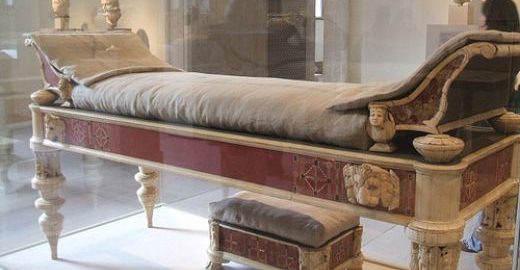Roman patrician beds (lecti cubicidares) were located in the bedroom (cubiculum), usually in niches. They were high, so as needed a stool (scamnum) to climb them. The Roman going to sleep usually put his sandals on the footstool, which then faded under the mass of the cover (the stool was so fitted that it was under the bed).
The Romans bed was closed on one side with a board (pluteus) and on the other it was open (sponda). Wooden legs were richly decorated with ivory and gilded, bronze plates. The corners were decorated with the heads of cats and satires. Pillows and mattresses (torus) were stuffed with various materials: straw, wool, cheap feathers (mainly for chicken, duck or goose) or leaves. The latter were believed to have a beneficial effect on the health of the sleeping person, and above all, they pull the parasites away. The mattress itself hung on leather straps. Pillows were beautifully decorated at the ends. The bedding was made of wool or hemp (in ancient times it also produced shirts, tablecloths, ship sails). In richer homes there were blankets and quilts, made in purple with sewn gold patterns. Curtains around the bed were also used to separate from the dust.
Interestingly, it was rare for a Roman couple to spend the night together. It was more common for each spouse to have a separate room. Researchers believe that the Roman bed was definitely less comfortable than today.
The poorer layers had much poorer beds made of wood and sometimes of cement. The latter general type was especially in lupanarach. Pillows in the lower layers were rare.







